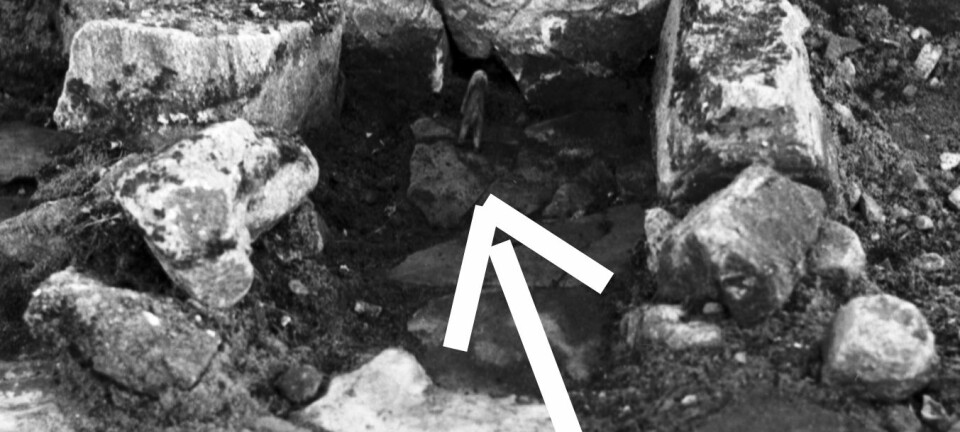
Denmark’s only medieval rowboat dated
Researchers have now assigned a date to the sensational find of a rowboat. The dating cements the small vessel’s position as Denmark’s only preserved medieval rowboat.
Archaeologists in the Danish town of Vordingborg have every reason to be excited.
During a recent excavation of the moat surrounding the Vordingborg Castle ruins, they came across a fallen castle tower and a rowboat from the Middle Ages. The latter has never previously been found in Denmark.
Lars Sass Jensen, who headed the excavation, says that a dating of the boat’s wooden planks reveals that the little vessel was in its prime around the year 1400.
“A tree-ring dating of the rowboat reveals that the wood that the boat was built of was felled around the year 1390. So a good estimate would be that the boat has been sailing around in the moat around the year 1400,” he says.

With this dating, the soon-to-be-opened Danish Castle Centre in Vordingborg can boast of housing Denmark’s only preserved medieval rowboat.
Fishing boat or pleasure boat
Jensen explains that the rowboat may have served many functions. Some old moats had fish traps – fences under water, which were designed to make the fish swim in a certain direction and into a kind of enclosure. The boat may have been used for inspecting such fences.
“A moat has other purposes than just to defend the castle,” he says.
“We can see in later written sources that many moats contained fish traps, and it was possible to catch fish directly from the boat. But pictures from the period also reveal that high-status people could go for a ride in a rowboat.”
Fish from moat fit for kings
The rowboat is almost fully preserved. The only thing missing is a little section of one side and the part that the excavator broke off when we found the boat.
The archaeologist says that finding a boat in a moat is special, since then you know that it has sailed there and you can guess what it has been used for.
Perhaps the little vessel was only used for fishing, but it may also have been on little pleasure trips on the moat with dignitaries on board.
Jensen explains that if the moat was full of fish traps, then maybe there have been staff members at the castle whose job it was to look after them.
The fish was probably used for feeding the staff, and some of it may also have ended up on the king’s dining table.
Clear traces of medieval rowboat
It popped up in connection with some sewer work we were doing. Suddenly one of the planks peeped out of the soil. And as we dug it out, we noticed how exceptionally well preserved it was.
Despite its old age, the boat from Vordingborg is incredibly well-preserved. That has enabled the archaeologists to see that the six-metre-long rowboat has had a long life. It’s been patched and repaired over and over again.
“The rowboat is almost fully preserved. The only thing missing is a little section of one side and the part that the excavator broke off when we found the boat,” says Jensen.
“Because it’s so well-preserved, we can see that many repairs have been made on it, and that the keel is highly worn.”
He reckons the boat has been used over a few generations or perhaps even more.
It’s not clear exactly how it came about that the boat ended its days at the bottom of the moat. Jensen speculates that it may have happened on a winter’s day, when the boat has taken in water and it wasn’t thought to be worth the effort to try and pull it out of the cold water.
Personal top five find
But although Middle Age people may have thought that the boat had outlived itself, the Danish archaeologists are happy to give a new life to the old boat.
The well-preserved boat is an incredible find, which Jensen does not hesitate to place on his personal top-five list of archaeological finds.
”Finding it was amazing,” he says. “It popped up in connection with some sewer work we were doing. Suddenly one of the planks peeped out of the soil. And as we dug it out, we noticed how exceptionally well preserved it was.”
Soon to be exhibited
The boat has now been removed from the moat and placed in a water bath, so it won’t dry out before the restoration work starts.
The next challenge will be to find space for this unplanned discovery at the Danish Castle Centre, which is due to open next year.
-------------------------
Read the Danish version of this article at videnskab.dk
Translated by: Dann Vinther









